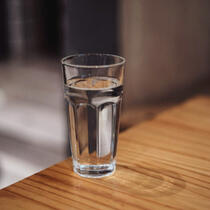About Irion Filtration
Iron in water makes sinks and tubs stain over time.
When iron travels with water, it will stop in some places where it's the least wanted. Iron in water clogs dishwashers, sprinklers, washing machines, wells, water pumps, and all of these other accessories.
Both beverages and food will be affected by the iron in well water. To say it simply, iron will make water taste harshly and that taste will go into the coffee, tea, and everything else made with water that contains iron. Iron in water also affects the look of the beverages giving them a black look. Foods that are cooked with water that contains iron, especially vegetables will turn dark and they will absorb the taste of the water.
Iron in water also has an effect on your skin and if you shower with the water that contains iron then your skin will be dry. This happens because iron water and soap don't mix together really well and it will leave excess soap residues on your skin and that will cause itching and dryness of the skin.
Iron filters are a great option when it comes to removing iron from water. There are a lot of different types of iron filters such as air injection iron filters, hydrogen peroxide plus catalytic carbon filters, or Hellenbrand reverse osmosis system.
Hellenbrand reverse osmosis system removes unwanted contaminants, it provides premium quality drinking water in your entire house. It also removes hardness and it does not use salt, it consumes minimum energy and it is a low maintenance product.
Iron filters eliminate the red staining and the rust in your sinks and toilet bowls. These systems eliminate the bad smell and taste of your water.
Iron filters eliminate the red staining and the rust in your sinks and toilet bowls. These systems eliminate the bad smell and taste of your water.
When the water is stored in the underground well, it is clear in color even though it can contain high levels of iron. We call this "ferrous" or clear water iron. Iron filters just take this water that is clear and they transform it to rust of ferric iron in the process that is known as oxidation. Once or twice a week these trapped particles are automatically left to drain. Both clear water iron and ferric iron (rust) are removed when iron filters are used. 0.3mg/L is the maximum level of iron that is recommended in water. When the levels of iron are more than 0.3mg/L then the water changes color and appears red, yellow, or brown and it stains fixtures and laundry. It also has a metallic taste and offensive odor. Water systems will become clogged and washing machines, dishwashers will rust.
Iron filter systems come in a lot of different sizes and the size of the system you will use depends on the flow rate of the water and that is measured in GPM (gallons per minute). A larger system is required when the higher the flow is.
